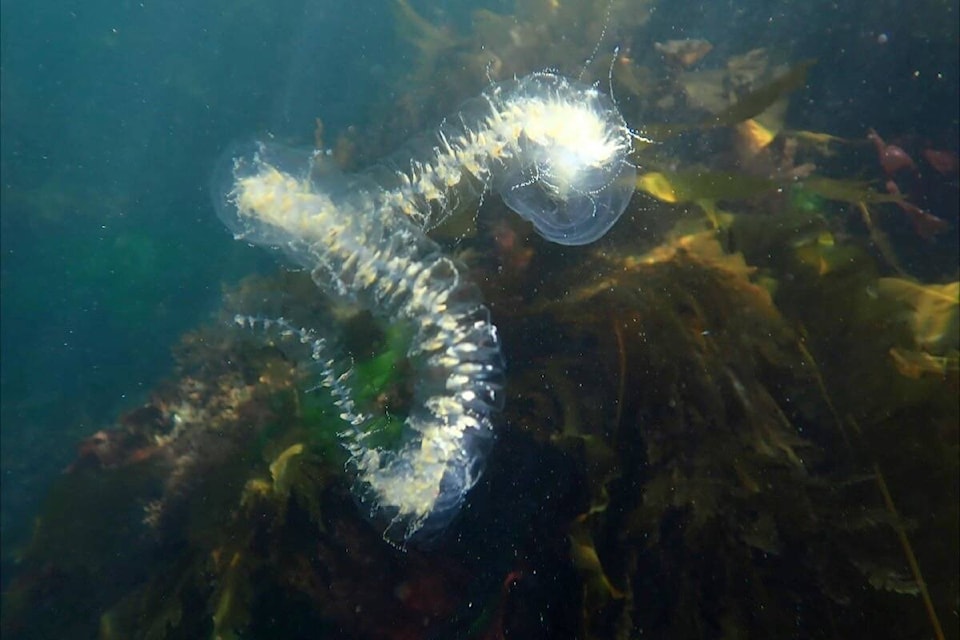Smitten with snorkelling in recent years, the hot heat in the final days of winter saw longtime Greater Victoria resident Steph Brulot-Sawchyn dip under the waves of the Salish Sea more frequently.
A fan of exploring outdoor activities such as hiking and tide pools, he discovered the online app iNaturalist during the pandemic. Inspired by Sara Ellison’s book Snorkelling Adventures Around Vancouver Island and the Gulf Islands: The Ultimate Guide, he eventually got a wetsuit and became a weekend diver.
The recent warm spell meant several days in south Island waters. With the last sunny day looming, ironically the first day of spring March 19, Brulot-Sawchyn headed into the waves near Clover Point with his brother, who quickly spotted something unusual.
Born and raised in Greater Victoria, it seemed out of the ordinary for the area.
“I have not a clue what that thing is,” Brulot-Sawchyn recalls thinking when he saw the two-foot long transparent creature with a jellyfish look.
“So I immediately, when I got home, posted it to iNaturalist and the Field Naturalists of Vancouver Island Facebook page,” he said. After some back and forth, online experts identified it as a siphonophore and there are only a dozen or so local sightings of the species – a deep sea organism – listed on iNaturalist.
“It’s not a normal species you see here so it was very cool to see,” Brulot-Sawchyn said.
He was right about it being unusual, the praya dubia or giant siphonophore generally lives in the mesopelagic zone, 300 to 700 metres under the sea, said Moira Galbraith a marine biologist with Fisheries and Oceans Canada.
“They are kind of uncommon in our area,” she said in a phone interview from her North Saanich office.
Though sightings are on the rise, as an El Nino brings warm surface water into the area. The Island is at the northern most boundary of the California Current which moves in this way during winter.
“When the current changes in fall/winter and starts becoming more dominant we sometimes get these guys pushed up against our shelf.”
“These things come in cycles but for this particular animal, we’ve been pretty much seeing it sporadically in our sampling since 2015,” she said.
In their usual mesopelagic – think middle sea – habitat, praya can be 30 to 50 metres long. Being so close to the surface, Galbraith feels it’s unlikely the one photographed March 19 off Victoria won’t wind up washed on shore.
“This is interesting that you see these. There’s no way you should be snorkelling in 300 metres, this is not their area,” she said. “They don’t have the ability to navigate stronger currents.”
Seeing it so shallow, and so far north is indicative of recent heating .
“These are all deep water so there’s something in this movement of water that causes some sort of welling that brings water from deep, I think,” she said.
With more people spotting deep water critters coming closer to the surface, and washed on shore, there’s more to see.
It’s the only oddity so far for Brulot-Sawchyn.
“Lots of species out there, but nothing you wouldn’t expect to see – except some giant sopinophores,” he said with a laugh. “The thing I saw that was interesting was the amount of people out snorkelling with the weather. especially in East Sooke.”
READ ALSO: Rare ‘king-of-the-salmon’ washes up on Oak Bay beach
READ ALSO: Ratfish generates social media buzz on Vancouver Island
